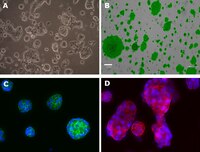SCC652 Sigma-AldrichGLUTag Mouse Colonic Endocrine Cell Line
GLUTag cells are murine intestinal endocrine L-cells derived from colonic tumors. They secrete a variety of pro-glucagon derived peptides (PGDPs) such as GLI, IRG, and GLP-1. GLUTag cells are among one of the most widely used cell models to understand GLP-1 secretion.
More>> GLUTag cells are murine intestinal endocrine L-cells derived from colonic tumors. They secrete a variety of pro-glucagon derived peptides (PGDPs) such as GLI, IRG, and GLP-1. GLUTag cells are among one of the most widely used cell models to understand GLP-1 secretion. Less<<Recommended Products
Overview
| Replacement Information |
|---|
| References |
|---|
| Product Information | |
|---|---|
| Components |
|
| Quality Level | MQ100 |
| Biological Information | |
|---|---|
| Host | Mouse |
| Cell Line Type |
|
| Physicochemical Information |
|---|
| Dimensions |
|---|
| Materials Information |
|---|
| Toxicological Information |
|---|
| Safety Information according to GHS |
|---|
| Safety Information |
|---|
| Packaging Information | |
|---|---|
| Material Size | ≥1X10⁶ cells/vial |
| Transport Information |
|---|
| Supplemental Information |
|---|
| Specifications |
|---|
| Global Trade Item Number | |
|---|---|
| Catalog Number | GTIN |
| SCC652 | 04065272240000 |
Documentation
Data Sheet
| Title |
|---|
| Data Sheet-SCC652 |








